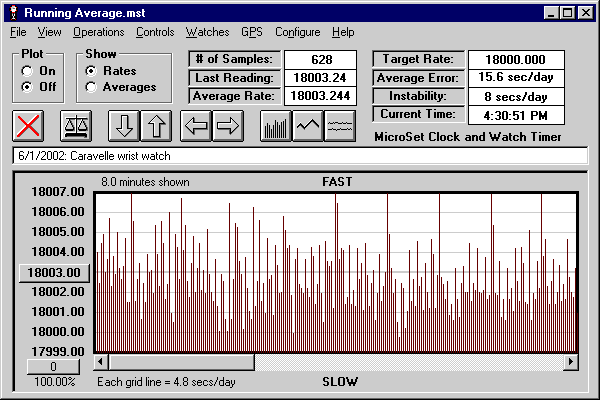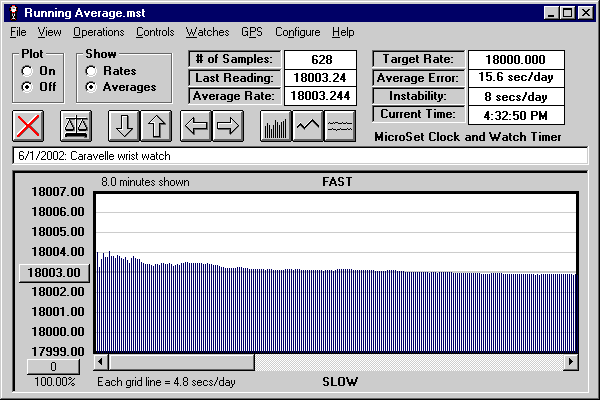MicroSet 3 and the Watch Timers have a Running Average mode built into the Time Mode. This feature is unprecedented in clock and watch timers as far as we know, and provides enormous gains in displayed accuracy.
It is well known that clocks and watches speed up and slow down over time. If you’ve never looked at the rate of a timepiece as captured by MicroSet on a computer screen, you might be surprised at how much variability there is. The graph below shows a small ladies wrist watch as captured by MicroSet. A new reading is displayed for every ten beats. You can see how jumpy the readings are. Each grid line represents a change of one Beat Per Hour. Readings from this watch change by 7 or 8 Beats Per Hour.

When MicroSet is hooked up to a personal computer it’s easy to have the computer calculate a running average of the rate. The graph below shows the MicroSet running average of the data shown above.

In this graph, the rate settles down within a very few beats to an average rate between 18003 and 18004 Beats Per Hour. Within a couple of minutes the accumulated average is within a couple of tenths of a BPH of 18003 for every reading. The entire graph above represents just eight minutes of time.
This is what the Running Average function does on MicroSet’s built-in LCD screen. It keeps a running total of all readings, and divides that by the number of readings captured. It then displays the resulting average. Every minute that MicroSet runs refines the rate more accurately. You can let the Average mode run for five minutes or five days. After just a couple of minutes, readings that may have been jumpy and confusing settle down to a stable average. And it works whether MicroSet is configured to display Beats Per Hour, Seconds Per Beat, or Error Per Day.
You can easily turn the Average feature on or off. When it’s off, MicroSet shows you each reading. When it’s on, the LCD screen will show you how many readings have been taken and what the current average is.
